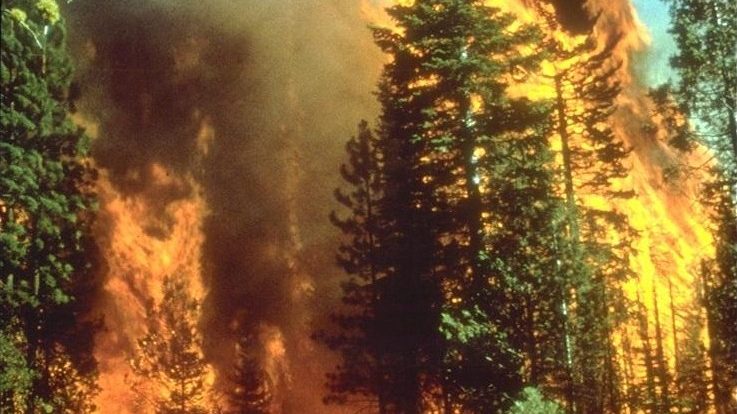
TUSCALOOSA, Ala. – The Earth’s first forest fires appear to have occurred earlier than previously thought, pointing out a link between widespread wildfires and ancient tree evolution, according to researchers at The University of Alabama
Although small wildfires of primordial vascular plants without leaves, branches or a developed root system sparked by lightning or lava occurred as early as 420 million years ago, these are not believed to be widespread because the plants needed water or a wet climate to survive.
However, using fossil charcoals and geochemical signals from ancient rock layers, UA researchers found the early forest fires started to spread about 383 million years ago. This is also evidence that more mature plants of trees and shrubs spread through forestation into relatively arid and inland environments.
The study was an invited submission and published recently in a special issue of the journal Palaeogeography, Palaeoclimatology, Palaeoecology. It demonstrates the methods used to find evidence of these ancient forest fires are useful to discover more about paleoecological and paleoclimate indicators.
“We can learn the ancient environments and plant evolution in a new way,” said Dr. Takehito Ikejiri, a paleontologist with UA’s geological sciences and Alabama Museum of Natural History who worked on this project. “We conclude that trees and shrubs gathered as forests invaded to dry climate for the first time in Earth’s history. Not many other types of evidence can tell this, but ancient fires do.”
In modern environments, different types of vegetation can be burned, such as grass, shrub, wetland plants and forest. Exactly what type of vegetation and climate caused the early wildfires during the period of Earth’s history known as the Devonian, the geological period between 358 to 419 million years ago when vascular plants evolved and diversified, has not been well known because of limited evidence recorded in rocks and fossils.
Although data of ancient wildfires, or paleowildfires, are scattered, Dr. Man Lu, postdoctoral researcher in geological sciences and first author of the paper, started to gather global occurrences of paleowildfires from the literature and her own research projects.
She looked at biomarkers in the fossil record, or molecular fossils useful when traditional fossils are not well preserved. Traditionally, scientists identified tiny fragments of coal-like fossil charcoals, which are burned plant remains, from ancient rocks, but in the past decade, biomarker-based evidence has been used more often, said Dr. YueHan Lu, UA associate professor of geological sciences and co-author on the paper.
The biomarkers the researchers use to reconstruct wildfires are polycyclic aromatic hydrocarbons, which are complex groups of compounds with condensed benzene rings formed under high temperatures, and some of the compounds can indicate ancient wildfire activities.
The team analyzed the global paleowildfire data statistically from the world-wide distribution of Devonian rocks. The synthesized data show two interesting features. The paleowildfire largely emerged in the Famennian Age, the latest age interval of the Late Devonian about 372 to 359 million years ago. Also, most evidence comes from an eastern part of the ancient Euramerica continent, which consisted of today’s North America, Greenland and most western European countries.
The UA researchers coin this continental-scale, extraordinary wildfire spread in Earth’s history as the Famennian Wildfire Explosion, or FWE. The FWE indicates the first invasion of land plants, mostly the same types of trees and shrubs, to drylands.
The team analyzed the data of Devonian plant distributions from the fossil record and found that one taxon, or unit of trees dominated in eastern Euramerica. Lignophytes, referring to one of the first trees including ancestry species of seed plants, were the major component of late Devonian forests on the eastern Euramerican land, according to the research.
“Those shrubs and first tall trees spread in a relatively short time,” Ikejiri said. “Ironically, the Lignophyte-dominant early forests must turn to be the main fuel source for continuous global wildfires, like the Famennian Wildfire Explosion.”
The ecological impacts of Late Devonian wildfire evolution could go further.
“We are currently working on the effect of the FWE on global climate change,” YueHan Lu said. “It may be responsible for an extreme low-oxygen level in oceans that triggered the mass extinction event of marine species.”
This work was supported by the American Chemical Society Petroleum.
Contact
Adam Jones, UA communications, 205-348-4328, adam.jones@ua.edu
